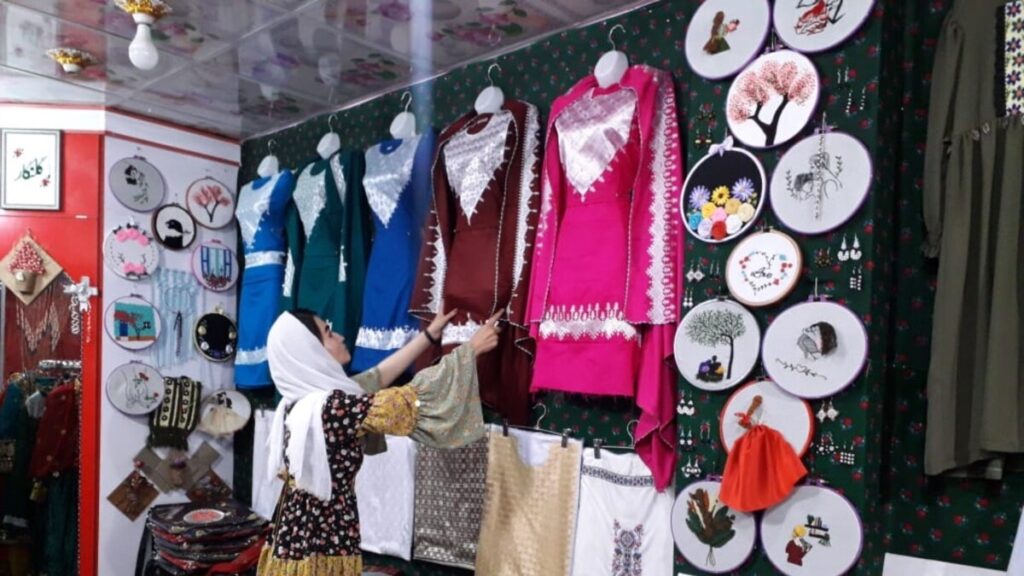Author: Mahdi Mozaffari
In the first issue of the article “Women and Entrepreneurship,” we discussed the foundations of the research and defined its fundamental concepts. We also explained the role of women in national development, stating that women’s entrepreneurship serves as a powerful force and driver that plays a vital role in the progress and prosperity of communities. This influence impacts various dimensions of national development through different pathways, bringing about positive and valuable outcomes.
Now, in the second issue of this article, we will address the factors affecting women’s employment. We will discuss the components involved in maximizing Afghan women’s participation in the workforce and outline some barriers to Afghan women’s entrepreneurship.
The factors influencing women’s entrepreneurship can be examined across four dimensions: individual, cultural, economic, and social.
Examining the Impact of Individual Dimensions (Motivations, Personality Traits, and Demographic Characteristics) on Women’s Employment
In analyzing the individual factors affecting women’s employment, attention to their motivations, personality traits, and demographic characteristics is crucial. These factors interact with one another to create conditions and contexts necessary for women’s presence in the workforce or to create obstacles in their path.
The Role of Motivations and Personality Traits
Studies have shown a direct and positive relationship between self-confidence, positive self-perception, and women’s employment and job positions. Women who believe in their abilities and possess high self-esteem are more assertive in seeking job opportunities and tend to perform successfully in the workplace.
Afghan women pursue employment for various motivations, including:
- Economic Independence: Some Afghan women seek economic independence to meet their own needs and those of their families. This is especially important for women who are heads of households or come from low-income families.
- Empowerment: Employment provides Afghan women with an opportunity for empowerment and social advancement. By acquiring skills and experience in the workplace, women enhance their self-confidence and self-esteem, enabling them to take a more active role in decisions related to their lives and families.
- Supporting the Family: In many Afghan families, women play a crucial role in providing for the household. Employment allows women to contribute to the family income and helps improve the living conditions for themselves and their children.
Impact of Demographic Variables
Fertility Rate: Studies show that in many societies, especially in countries with young populations and high fertility rates, women’s participation in the labor market significantly decreases. Increased caregiving responsibilities resulting from childbearing are recognized as one of the main factors contributing to this phenomenon. Challenges related to balancing labor demands with family responsibilities, including time constraints, childcare costs, and lack of appropriate infrastructure, are considered major barriers to women’s employment.
Afghanistan, with a total fertility rate of 5.1 children per woman, is one of the countries facing this challenge acutely. This rate is significantly higher than the global average of 2.1 children, indicating high fertility among women in this country. In contrast, the female labor force participation rate in Afghanistan is only 24%, the lowest in the South Asian region. This statistic clearly shows a significant inverse relationship between fertility rates and women’s participation in the labor market in Afghanistan.
However, the relationship between women’s employment and fertility rates is not a simple linear one, and multiple factors influence this complex relationship. In addition to cultural, social, and economic factors, government policies, access to childcare services, equal job opportunities, and societal attitudes toward women’s roles in the community also play a significant role.
Overall, it can be said that in Afghanistan, the high fertility rate and low female labor market participation are the result of the intersection of various cultural, social, and economic factors. To increase women’s participation in the workforce and improve the economic and social status of Afghan women, comprehensive and integrated policies must be considered that simultaneously address reducing fertility rates, improving childcare infrastructure, creating equal job opportunities, and changing social attitudes.
- Marital Status: Among women in Afghanistan, unmarried women enjoy greater freedom to enter the labor market and actively participate in economic and social spheres due to the prevailing social and economic structures. In contrast, married women face numerous obstacles rooted in traditional norms and a lack of supportive infrastructure. Societal expectations for married women to take primary responsibility for childcare and household duties are considered one of the main reasons for the low economic participation rates of married women in Afghanistan. This is particularly evident in areas where educational and job opportunities for women are limited.
On the other hand, the absence of affordable daycare centers and childcare facilities, as well as underdeveloped public transportation systems, create additional challenges for working married women. These women often struggle to balance their family and work responsibilities, which frequently results in reduced working hours or complete job abandonment. Consequently, gender inequalities in Afghanistan’s labor market have deepened, leaving married women marginalized within this market.
- Education Level: Official statistics indicate significant achievements in Afghanistan regarding increased literacy rates and women’s presence in universities up to 2021. These accomplishments, resulting from decades of effort, were seen as a promise of a brighter future for women in Afghanistan. By acquiring the necessary knowledge and skills, women made substantial strides toward improving their status in society and participating in various fields.
However, unfortunately, since that year, we have witnessed a concerning downward trend in this area. Statistics show a noticeable decline in literacy rates, particularly among women. This sudden drop has raised alarms about the country’s educational system, raising fears that the achievements of past decades may be completely lost.
This decline in literacy rates stems from reduced female attendance in schools and universities (a situation exacerbated by anti-educational policies). This issue could have multiple negative consequences for the country, including a severe reduction in women’s participation in the workforce and a decline in their employment levels. It is evident that the absence of women in various fields poses a significant barrier to the progress and development of the country.













